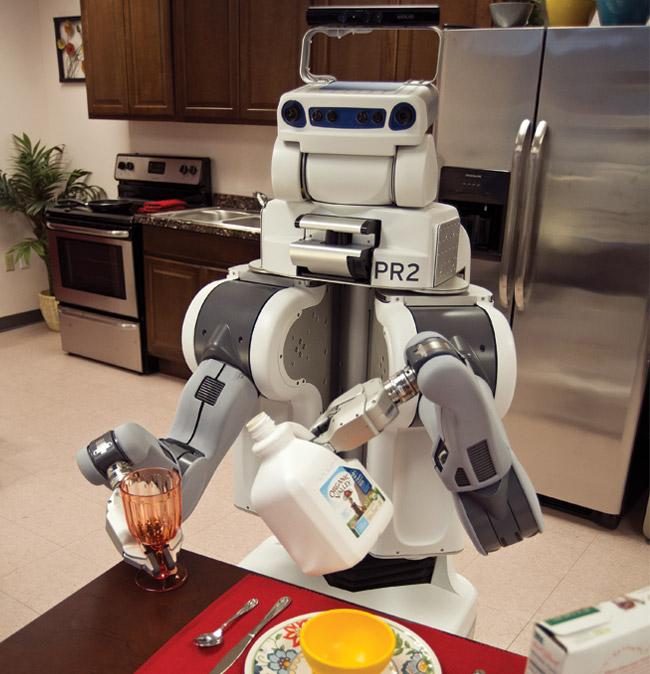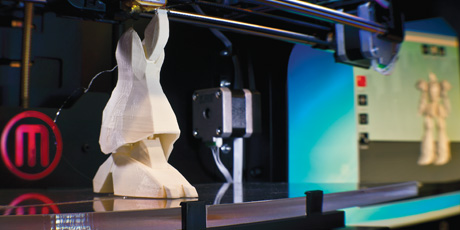R2D2
Robot, M.D.
UTARI launches new Assistive Robotics Lab aimed at designing robots for health care, first-responder, and other life-enhancing applications

In the Living Laboratory,UTARI's robots are programmed to perform household tasks.
Someday soon, a robot may save your life.
That’s the driving focus behind the new Assistive Robotics Lab at the UT Arlington Research Institute (UTARI). Launched in December 2012, the lab is aimed at advancing robotics for health care, first-responder, and other applications.
“If you think about our nation and our world, we have an aging population,” says retired Army Gen. Rick Lynch, executive director of UTARI. “People in assisted living facilities and wounded warriors, what they ask for is independence. What they want is to not have to be reliant on others.”
At its opening, the lab received robots from RE2 Inc. and QinetiQ North America that researchers hope will someday aid in that task. These included a mobile, manipulative robotic nursing assistant that, among other things, can be used for physically intensive tasks, such as helping a patient sit up or transfer to a gurney.
UTARI also recently debuted its Living Laboratory, which allows researchers to focus on projects that center on enabling robotic platforms to assist people with common household activities.
“We’re only limited by our imaginations,” says RE2 president Jorgen Pedersen. “Everyone wants Rosie from The Jetsons. That will come, but if you take baby steps and provide tools for people to use, we will eventually see that technology in the home.”

















